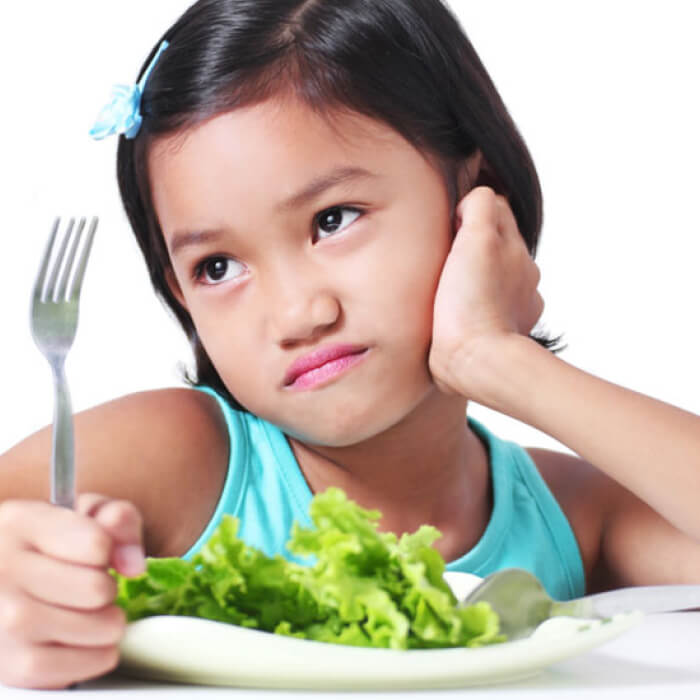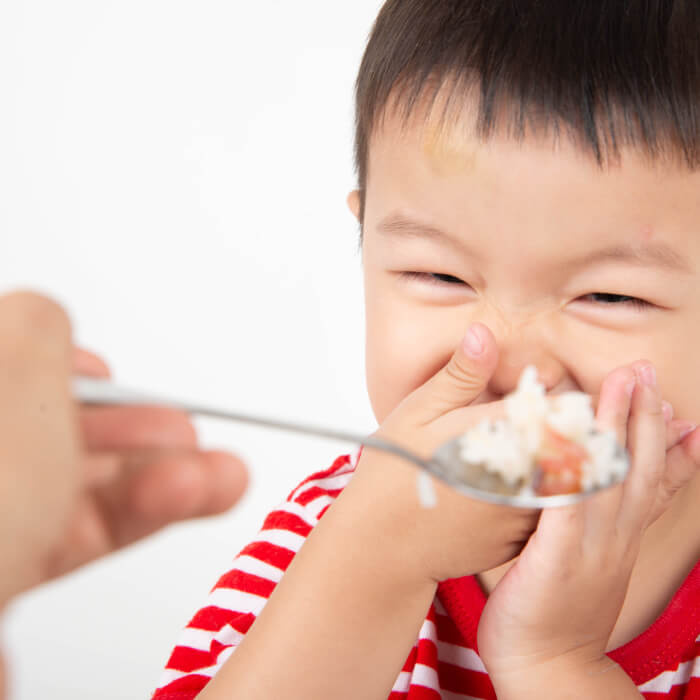Pediasure Gold
- Main Image
-

- Subtitle
- 1-10 Years Old
- Title
- PediaSure® Gold Vanilla
- Detail Page Path
Want to serve healthy food for kids? Get your child started on healthy eating habits from a young age, by encouraging them to love their fruits and greens.
After six months, your child would have progressed from just sucking to now being able to swallow. This is the time to start introducing fruits and vegetables to your baby’s diet.
You can cook, puree and mash soft vegetables and fruits to achieve a texture that your child’s eating ability can handle.
Start with one new vegetable or fruit at a time. Wait three days before you add another ingredient to your child’s diet so that you can identify any that may cause a reaction in your child.
After seven months, your child should be open to more variety, more texture and more flavours. Hold off the bitter and pungent vegetables for now, as babies are still sensitive to strong flavours at this age.
When your child is nine months-old, your little one should learn to chew and bite on fruits and vegetables. Swap the purees for more solid foods gradually, while supervising your child’s mealtimes to ensure the safety of your baby.
When children become familiar with the fruits and vegetables on their plates, they’re more likely to eat them and not fear them.
As you feed your children these healthy produce, tell them the names of each food. Take your little one to the supermarket, point out the beautifully coloured fruits and vegetables and read out the names.
For a fun twist, link each fruit or vegetable to stories and characters that your child is familiar with. The spinach-loving Popeye the sailor and the characters from Bananas in Pyjamas are good examples.
Fruit and vegetables can also offer many textures for kids to explore. Create opportunities for your child to touch these healthy foods.
You can cut up the fruit or peel its skin, then allow your kid to touch, hold and squeeze each fruit before eating them. Speak out the words and your child will soon experience what you mean when you say soft, hard, prickly, smooth, mushy and more.
Your child can learn maths with fruits and vegetables. Allow your child to count the fruit as you buy them at the supermarket. You can also teach fractions to your child as you cut up an apple into halves, quarters and more minute sections.
Another tip: Weigh fruits at home or in the supermarket to help your kid learn the concept of weight. Extract juice out of a fruit and measure the liquid in a calibrated jug to teach volume to your kids.
Your child can use these healthy foods in art and craft projects too. Cross sections of fruit and vegetables make delightful shapes. Cut up the produce in interesting sections and allow your kids to dip these foods in paint and create masterpieces on canvas.
Some fruit juices make great ‘mystery’ ink for older kids. Let your child write with orange juice and after it dries and disappears, warm up the paper gently to allow the letter to reappear. Fruit and vegetable juices also make up many magnificent natural pigments that can be used as paints.
Take time to visit the farms in Singapore with your child. This back-to-nature experience can help children understand how farm produce is prepared and handled, before it reaches their plates.
Allow your child to ‘garden’ a little piece of land with you. This could be a small section of the garden or a pot on the balcony. Plant and water the seeds together and care for the plants as they grow. Start with quick-growing varieties such as tomatoes and beans.
Older children can help in the kitchen and learn cooking with child-proof cutlery. Kids feel tremendous ownership to things they have made. Allow age-appropriate participation, don’t mind the mess and do supervise for safety. Use this chance to get them to eat the produce as well.
All this exposure to vegetables and fruits will help them eat up these healthy foods, with no fuss. Bon appetite!
SG.2022.27905.PDS.1 (v1.1)

Healthy food for children. Do you have a picky eater? Find out if your child is eating the right food for a healthy and balanced diet.

Is your child picky eating? Learn here about 8 signs to look out for and some tips and tricks to help meal time meltdowns.

With PediaSure® Gold being made, transported and retailed within Singapore, parents can be assured of freshness, convenience and value.
You are about to exit for another Abbott country or region specific website.
Please be aware that the website you have requested is intended for the residents of a particular country or region, as noted on that site. As a result, the site may contain information on pharmaceuticals, medical devices and other products or uses of those products that are not approved in other countries or regions.
The website you have requested also may not be optimized for your specific screen size.
Do you wish to continue and exit this website?